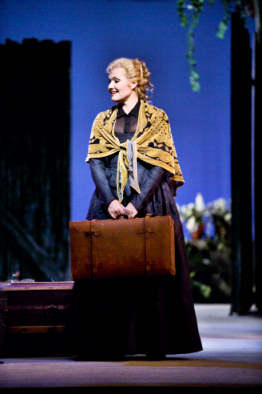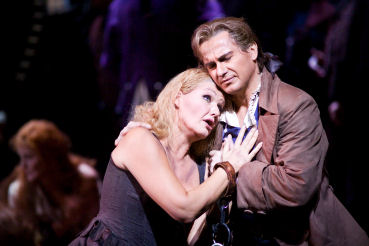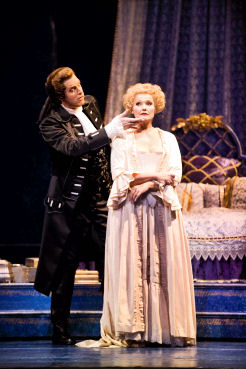|
Editorial Board
Melanie
Eskenazi
Webmaster: Len Mullenger
|
Seen and Heard International
Opera Review Puccini, Manon Lescaut: Soloists, chorus & orchestra of San Francisco Opera, Donald Runnicles (cond), War Memorial Opera House 19.11.2006 (HS)
CAST Manon Lescaut: Karita Mattila Des Grieux: Misha Didyk Lescaut: John Hancock Geronte: Eric Halfvarson Edmondo: Sean Panikkar
PRODUCTION Conductor: Donald Runnicles Production Designer: Frank Philipp Schlossmann Stage Director: Olivier Tambosi Lighting Designer: Duane Schuler
Finnish
soprano Karita Mattila has grown exponentially as Puccini's
Manon Lescaut since I saw her last year at Lyric
Opera of Chicago. In Sunday afternoon's opening performance
at San Francisco Opera of the same Chicago production,
she looked and sounded infinitely more comfortable in
the role.
But
most of all, it was the singing. Phrases that ran past
with minimal inflection in Chicago came to life in San
Francisco. She varied the attack to string together some
melodic gestures like pearls and spit out others with
a rapier cut. She caught the gentle lilt of "In quelle
trine mobile" perfectly. "Sola, perduta, abbondonata"
emerged as an intrinsic part of the final scene rather
than a star moment for the leading soprano because the
desperation in her body transmitted itself into the voice.
John
Hancock (Lescaut) and Karita Mattila As
Des Grieux Ukrainian tenor Misha Didyk overcame a rocky
start, in which he pushed his not very large voice beyond
its boundaries to try to fill the large War Memorial Opera
House. He fairly shouted "Donna no vidi mai"
in Act I, making some ugly sounds, but by the Act II duet
he had found a better balance. In Acts III and IV, performed
without intermission, he got it right. His tenor sounded
free and unblemished, even if he never made anything like
a glorious sound.
Pictures © Terrence McCarthy
2006 Back to the Top Back to the Index Page |
| ||
|
||||





